|
That time of the year for thunderstorms and fireworks is coming again. Fear of thunderstorms and fireworks affects many of our pets and it is time to condition your pets before summer and the July 4th! DO START NOW!! I also have other full hour calming music downloads for sale. With summer thunderstorms and the July 4th coming up many dogs have fears of thunderstorms and fireworks! My fireworks phobia dog loves CBD oil to help calm her during this time. You might want to check this out if you have a pet with fears or any mobility or other painful issues. My Integrative Vet recommended CBD oil to me. You might want to check it out. With the summer thunderstorms and the 4th of July coming up many dogs have fears! My fear phobia dog loves CBD oil to help calm her during this time. You might want to check this out if you have a pet with fears or any mobility or other painful issues. I lost my other very special Golden Retriever, Shanti, that we used CBD oil with for over a year. She had a neck and shoulder injury and she loved the CBD oil. Every time she saw the bottle she was right there to get it and towards the end she didn’t come as easily because of mobility issues but still loved it. I know it definitely helped her with her pain and mobility issues. I am so happy that my Integrative Vet recommended the CBD oil. I know the CBD oil was sure helpful and she LOVED IT. She showed me this by the way she wanted it 3 times a day or whenever I offered it. I am now using herb tinctures and other herbal blends with my dogs testing them out for many health concerns to balance the dogs energetics. I am working with a Canine Herbalist, Rita Hogan, and I have been using Nettles Seed Tincture along with Milk Thistle Seed tincture for a kidney and liver detox. Nettles is also great for calming and allergies. I have noticed a difference with both of my dogs watery eyes with the Nettle Seed tincture. lt has really helped my allergies also. I hope it will have a calming effect with the CBD oil for my fear phobia fireworks and thunderstorm dog. According to The American Humane Society of the United States, "so many pets are frightened and try to escape the sights and sounds that animal shelters around the nation report a dramatic increase in lost pets during holiday's and thunderstorms
Anxious families often find themselves searching the streets and shelters looking for a treasured family member whose fear drove him to jump a high fence or break his leash or chain. If your pet is upset by thunder, a door slamming or other loud noises, and fireworks will be utterly terrifying.” This happened to me years ago with my storm phobia dog. I had my dog confined to my bedroom where she was safe but one of the guests children didn’t listen to the instructions to stay out of the bedroom and opened the door. Of course, off ran my dog. She was so afraid that she climbed the back yard fence and just ran. When a pet is fearful they don’t remember the way they went in order to find their way home. The State Police found her the following day laying in a ditch in shock. Luckily she was returned to me alright. She was wearing her ID tags and back then the police didn’t take her to the dog pound. That was a great lesson for me and I never leave my pets alone on the 4th of July or New Year’s Eve when I know there will be fireworks. I currently have a dog with fears of loud noises and fireworks. My pets are too important to me to leave them alone a few days a year when they can be traumatized. I have worked very hard with energy work, and other techniques to reduce my one dogs trauma to take a chance to let anything else happen. Here are some recommendations for keeping your pets safe during the fireworks.
Behavior Modification can work with fearful dogs. It isn’t an instant fix but I have had success over time with different techniques that have calmed the dog from panting and shaking to a more mild situation . I currently have a dog that has fears of storms and especially fireworks. She had a large firework drop down at her as she walked out our door and that was very traumatic for her. Some animals are more predisposed to these fears than others. Sometimes you can use a recording with sounds of something exploding and gradually play it louder and louder while engaging the dog in some play or training activity that she enjoys over a period of days to weeks. Playing the sounds didn’t work for my dog because there wasn’t any vibrations or pressure associated with the recording. The problem is that listening to a recorded sound doesn't have the vibrations created by the actual fireworks. If your dog is food motivated you can couple a favorite food or treat with the increasingly louder sounds, so the dog becomes conditioned to understand that the loud noises come with tasty snacks. Storm phobia is harder to help a dog get over — much harder — and why is not clear. But if you want to desensitize your dog to storms, be sure to introduce the dog to the sounds of storms in the same gradual, structured way that you would reintroduce her to anything else she's afraid of. That's how you will instill confidence in the face of adversity. Again the barometric pressure change created by the storm and the earth vibrations will not be felt by playing the recorded sounds of fireworks or thunderstorms. If you have a basement you can take your dog to the basement during a storm to help muffle the noise, Unfortunately many of us don’t have a basement, therefore, try to get to the quietest place in your house or the place your pet is most comfortable being at. Draw any blinds or curtains while playing white noise or calming music in the background to help drown out the sights and sounds of the storm. Don't sympathize or agonize over what your dog is going through, because that only reinforces the fear. Instead, distract your dog by playing fetch or engaging in some other game or routine that she enjoys. If you stress about their fear they will feel your stress and that doesn’t help the situation. As the dog begins to focus on the fun, and relaxes some maybe during the second, third, or fourth storm, gradually increase exposure. Open the blinds a bit. Sometimes a thunder jacket (available online or at most pet stores) or a home made wrap can work. Research suggests that for some dogs, storm phobia is not about the noise but about the buildup of static electricity on the dog that causes shocks similar to feeling the pressure. (You'll often find a dog in the bathroom pressed behind a pipe during a storm; pipes conduct electricity away.) I have had good success with using therapeutic grade essential oils, healing energy work, sound therapy relaxation music, herbs and CBD oil. This is all part of my Pawsitive Wellness Center’s Business. All techniques can be done in the comfort of your pets home or from a distance You can diffuse the oils or play the relaxation music daily to relax the animal. This will need to be done ahead of New Year's Eve so the dog learns to relax under normal conditions and especially so they don’t associate the essential oils or music with the fireworks or thunderstorms. I am offering a special on the Tuning Fork Music now through the summer months and it is an easy download from my website. This has been very effective for calming my animals as well as my clients.
0 Comments
Fireworks are upon us so I'm offering a FREE DOWNLOAD of the TUNING FORK RELAXING MUSIC embedded with the sound healing frequencies of the Chakra Tuning Forks. This can help calm you and your pets during this stressful time. This is excellent relaxation music for you and your pets. Your pet is as relaxed as their environment. This music uses the frequencies of the Chakra Tuning Fork Sound Healing Energy. The Tuning Forks are aligned to each of the animals chakras. This music is great to help balance the animals energy field. You can play it to help your pets settle down or before bedtime. This will help calm your pet/s and any humans listening. It is great to relax any animal with fears of fireworks, thunder and lightening and more.
Meeting people is not that easy, but it’s harder for both you and your dog. After all, it’s good for your four-legged pal to interact with members of his or her own species, but everyone has to get along.
It isn't easy if the dogs get along but you don’t really get along with the owner, that’s going to be a pretty boring play date for the humans. And it’s just as bad if you’re friendly with someone but the dogs spend the entire time barking and growling — or just have very different energy levels. Still, don't give up because it can be challenging, so here are several ways you can make dog acquaintances and eventually find a few great friends for your dogs and you. Many times walking in your neighborhood will bring out other dogs on their walk. It is best to find people that you know so you know how their dogs have been cared for. Dog Parks Usually this one can be obvious, but there are some things to consider. My vet told me that the dog park is the not very safe place to take your dog because there can be a lot of contagious diseases there. Many people go to the dog park because they don't really want to walk their dogs and don't watch them. They might not be taking very good care of their dogs either. I have seen many fights at dag parks when the parents are watching their dogs and this can cause serious injuries. If you watch your dogs and know the people the dogs can enjoy the visit. Go to the Pet Store While most owners don’t bring their dogs with them to the pet store all of the time, many do it at least from time to time, so there’s a definite opportunity here to meet people and their dogs. Of all the options, though, this is probably the least natural. Many times the staff can also be helpful and friendly so that will help your dog socialize with other people. Join a Rescue or Volunteer Want to meet other people who love and have dogs? A rescue or other type of dog volunteer organization can be a wonderful way to meet like-minded people in an environment that’s conducive to getting to know each other. Just be cautious about the canines. While most rescue dogs are completely harmless, there are some that may be suffering from behavioral problems due to their past experiences they’ve had, and you need to know what you’re getting your dog — and yourself — into. Sitting/lying down/exposing underside: appeasing/deferent dog lowers body posture, exposing vulnerable parts Turning head away, averting eyes: appeasing/deferent dog avoids eye contact, exposes neck Avoidance Dog turns away; shuts down; evades handler’s touch and treats. Brow Ridges Furrows or muscle ridges in the dog’s forehead and around the eyes. Difficulty Learning Dogs are unable to learn well or easily when under significant stress. Digestive Disturbances Vomiting and diarrhea can be a sign of illness – or of stress; the digestive system reacts strongly to stress. Carsickness is often a stress reaction. Displacement Behaviors These are behaviors performed in an effort to resolve an internal stress conflict for the dog. They may be observed in a dog who is stressed and in isolation – for example a dog left alone in an exam room in a veterinary hospital – differentiating them from behaviors related to relationship. Blinking: Eyes blink at a faster-than normal rate Nose-Licking: Dog’s tongue flicks out once or multiple times Chattering teeth Scratching Shaking off (as if wet, but dog is dry) Yawning Drooling May be an indication of stress – or response to the presence of food, an indication of a mouth injury, or digestive distress. Excessive Grooming Dog may lick or chew paws, legs, flank, tail, and genital areas, even to the point of self-mutilation. Hyperactivity Frantic behavior, pacing, sometimes misinterpreted as ignoring, “fooling around,” or “blowing off” owner. Immune System Disorders Long-term stress weakens the immune system. Immune related problems can improve when overall levels of stress are reduced. Lack of Attention/Focus The brain has difficulty processing information when stressed. Leaning/Clinging The stressed dog seeks contact with human as reassurance. Lowered Body Posture “Slinking,” acting “guilty,” or “sneaky” (all misinterpretations of dog body language) can be indicators of stress. Mouthing Willingness to use mouth on human skin – can be puppy exploration or adult poor manners, but can also be an expression of stress, ranging from gentle nibbling (flea biting) to hard taking of treats, to painfully hard mouthing, snapping, or biting. Obsessive-Compulsive Disorders These include compulsive imaginary fly-snapping behavior, light- and shadow-chasing, tail-chasing, pica (eating nonfood objects), flank-sucking, self-mutilation, and more. While OCDs probably have a strong genetic component, the behavior itself is usually triggered by stress. Panting Rapid shallow or heavy breathing is normal if the dog is warm or has been exercising, otherwise can be stress-related. Stress may be external (environment) or internal (pain, other medical issues). Stretching
To relax stress-related tension in muscles. May also occur as a non-stress behavior after sleeping or staying in one place for extended period. Stiff Movement Tension can cause a noticeable stiffness in leg, body, and tail movements. Sweaty Paws Damp footprints can be seen on floors, exam tables, rubber mats. I have used my certified pure essential oil blends to calm my dogs when we travel and I have found them to be very effective. Below are some other suggestions.
All-natural remedies to calm your dog while on the road. By Lisa Hanks Does your dog turn into a whimpering pile of mush whenever you try to take it for a drive? Traveling is daunting when your best friend throws up on the upholstery, then attaches itself to your brake foot. If you approach the problem holistically, however, travel for the two of you can be downright fun. Ask yourself these questions: Is your dog healthy? Be sure it has no illnesses affecting its ability to travel. Stress, fearfulness, anxiety and disorientation can be caused or aggravated by a number of health problems, including chemical or hormonal imbalances and food allergies. "Biochemical imbalances, hypothyroidism, etc., can all impact negatively on the animal's ability to cope with stress," said Suzanne Clothier, a holistic trainer in St. Johnsville, N.Y. "Such problems should be addressed and corrected." Why is your dog becoming carsick? If you have eliminated the obvious, the cause could be stress, sensitivity to movement, fear or more subtle problems. Clothier recommends a chiropractic checkup. "I've seen dogs who were poor travelers change dramatically when they were adjusted," she said. "It seems that subluxations [incomplete dislocations] in the neck, particularly at the atlas [the first vertebra of the neck], can contribute to motion sickness or uneasiness, possibly due to inner-ear disturbances." Your dog may also be reacting poorly to different water or unfamiliar food. Carry a supply of both from home. Make sure your dog has plenty of water in the car, and provide additional water about every two hours at rest stops. Also, as with humans suffering from motion sickness, it may help if the dog sits facing forward and has access to fresh air. Some veterinarians recommend withholding food six to eight hours before travel, but this can be difficult if your dog is used to being fed in the morning or requires regular meals to keep its body systems balanced. Instead, try a motion sickness preventive. Holistic-minded pet owners use ginger to soothe tummy turmoil. Ginger capsules, bulk dried ginger or ginger extracts are available at health food stores and some supermarkets. Read the directions on the label and reduce the dose proportionally, according to the weight of your dog. For example, according to a general dosing rule from herbalist Gregory Tilford of Animal's Apawthecary in Conner, Mont., if the dose on the label is for a 150-pound man, divide by the weight of your dog say 25 pounds, which equals one-sixth the dose on the label. If you need to increase the dose, do so in increments of 10 percent, but go no higher than 50 percent above your starting point, Tilford said. You can mix the dried or powdered herb into a small amount of food or add the extract to a little water and administer it with a dropper two to three times daily. If you are unsure of the dosage, ask a veterinarian experienced in using herbs on animals or an herbalist experienced in dosing animals. Is your dog comfortable traveling in its crate? Some crave the comforting close quarters of a crate; others enjoy riding unfett ered. Some dogs prefer to see where they are going; others do not. Watch your dog's reaction. Perhaps you should cover the crate, leaving plenty of space for ventilation. Or try a wire crate or a seat belt and harness set. Whichever method you choose, don't let your dog have the run of the car. If you stop suddenly or have an accident, an unsecured dog could crash into the windshield or be thrown around the interior of the car. In addition, a loose dog could cause an accident by interfering with your driving. Your dog should be in a secured crate or tucked into a special harness that buckles into your car's seat belt system. The seat belt-and-harness set works best for dogs heavier than 25 pounds; smaller dogs should be safely placed in a crate. Is your dog afraid of the car or crate? If your dog is afraid of entering the car or uncomfortable being in a crate, you may need to go back to a gradual, positive introduction, combined with therapies and remedies to reduce your dog's stress during retraining. T-TEAM, a calming massage treatment, or even affectionate stroking and petting can calm your dog before, during and after car travel or a session with the crate. In addition, calming flower remedies, such as Rescue Remedy or Five-Flower Formula, work well for some dogs. "Rescue Remedy is good for some; for others, it doesn't work," Tilford said. "Some individual flower remedies work in certain situations. You may need to consult a flower essence practitioner for additional advice on the best remedies for your situation. Administer these in con-junction with any training sessions according to the directions on the label in your dog's water, rubbed on its ears or muzzle or as part of a misting spray." Finally, calming herbs can de-stress training sessions. Tilford recommends valerian, skullcap and oat straw as extracts, dried or fresh. Some veterinarians recommend chamomile, but Tilford believes the herb may not be the best choice. "Chamomile might work; it's hard to say. It would be best in a tea, added to some salt-free broth." Steep about 1 teaspoon of the dried herb or 3 teaspoons of fresh herb in about 1 cup of hot distilled water for 10 to 30 minutes. Strain the herb and add 2 teaspoons to 2 tablespoons to broth two to three times daily. To accustom your dog to travel and its crate, start gradually and keep the session positive. Make the crate attractive by adding your dog's favorite blanket and toy. Toss a treat into the crate, encouraging your dog to retrieve it. Do this a few times a day. When the dog seems comfortable going into the crate, feed it its meals in the crate with the door left open. Once the dog is accustomed to this, close the door while it is eating for brief periods. Gradually extend the time you leave the dog in the crate with the door closed. Repeat this process until the dog is comfortable being in the crate for a few hours. Months before your trip is scheduled, accustom your dog to car travel. Lure it into the car with a treat and praise it highly for entering. (Leave the door open.) Do this daily for about a week, then put the dog into its crate or seat belt harness for short periods. Next, take short car trips that end with an enjoyable event, such as a romp in the park or a hike in the woods. Slowly extend the length of the trips, until the dog is comfortable spending several hours traveling with you. How well trained and socialized is your dog? Is it used to strangers and new situations? Did you take it to puppy kindergarten and obedience classes? If your dog does not respond readily to the basic commands — Sit, Stay and Come you may need professional help resocializing it. Dogs that enjoy new faces and places are less likely to be stressed and more likely to be happy travelers. Ask your veterinarian and friends for referrals to a dog trainer. How well do you travel? Are you tense and edgy when driving? Do you yell at other drivers and shake your fist at delays? You may be unknowingly transferring your stress to your dog. Clothier counseled one tense owner, whose dog traveled hunched fearfully, to relax and sing as she drove. "To my delight, she wrote me immediately, noting that as she began to pay attention to her own attitudes while driving, she discovered that indeed she was holding her breath, clenching the wheel and sitting rigidly," she said. "She relaxed her hands, focused on her breathing, sat back more comfortably and began to sing whatever songs popped into her head. To her amazement, her dog first watched her with a raised eyebrow, then visibly relaxed, curled up on the seat next to her and slept peacefully all the way home. |
Blog CreatorMary DeRoche Archives
April 2024
Categories
All
|
DISCLAIMER: I, Mary DeRoche, am not a veterinarian and do not practice medicine. I do not diagnose, cure, heal, treat disease or otherwise prescribe medication. I assist people in working with their animals in correcting energetic imbalances in their pet’s bio-field that assists the body to release its innate healing ability. When the energy chi of the body is balanced and moving correctly, the body’s innate natural energy heals itself. All healing is self-healing. Animals are affected by their environment so I also include the pet parents in my work. Animals do pick up energy from their family and environment. I only recommend the use of therapeutic grade essential oils for your pets because therapeutic grade essential oils have been tested to guarantee that they are free of synthetics, additives, toxins and any other impurities, which can result in side effects and/or inconsistent results. Essential oils and supplements are recommendations to help boost the pet’s immune system.
I recommend that clients continue to see their pet’s regular veterinarian and follow their advice and my work is a complement to regular allopathic medicine. My spiritual energy work is not a substitute for conventional medical diagnosis or treatment for any medical or psychological condition. For such issues, you should seek the proper licensed veterinarian. I am a Healing Touch for Animals Practitioner and a Subtle Energy Practitioner and my work is spiritually and energetically based and I believe all healing is spiritual in nature. I do not make any promises, warranties or guarantees about results of my work, or of the energy sessions. The energy sessions help many animals but like any energy work, it might not work for everyone. The use of essential oils, herbs and supplements is to assist the pet with balancing chakra centers for proper energy flow or chi.
© 2013~2023 Pawsitive Wellness Center All Rights Reserved.
I recommend that clients continue to see their pet’s regular veterinarian and follow their advice and my work is a complement to regular allopathic medicine. My spiritual energy work is not a substitute for conventional medical diagnosis or treatment for any medical or psychological condition. For such issues, you should seek the proper licensed veterinarian. I am a Healing Touch for Animals Practitioner and a Subtle Energy Practitioner and my work is spiritually and energetically based and I believe all healing is spiritual in nature. I do not make any promises, warranties or guarantees about results of my work, or of the energy sessions. The energy sessions help many animals but like any energy work, it might not work for everyone. The use of essential oils, herbs and supplements is to assist the pet with balancing chakra centers for proper energy flow or chi.
© 2013~2023 Pawsitive Wellness Center All Rights Reserved.
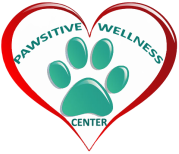
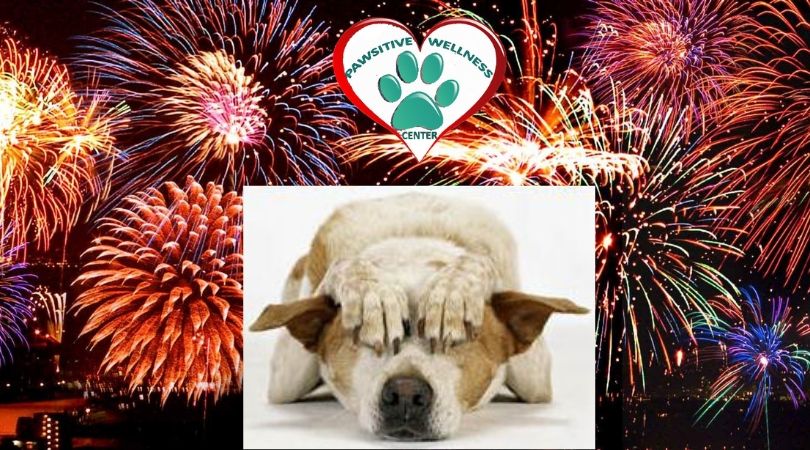
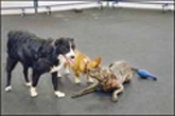
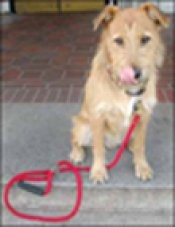
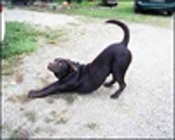
 RSS Feed
RSS Feed